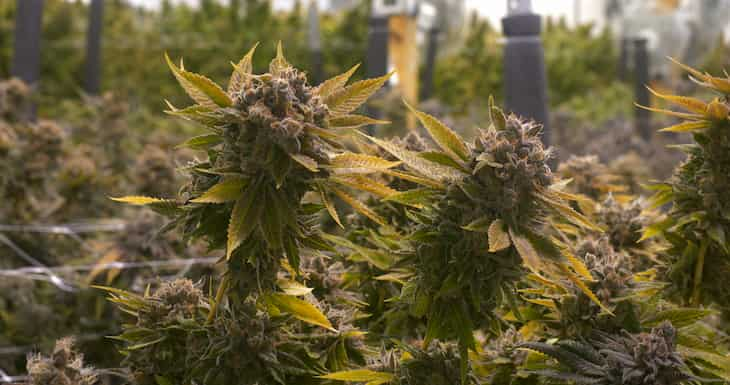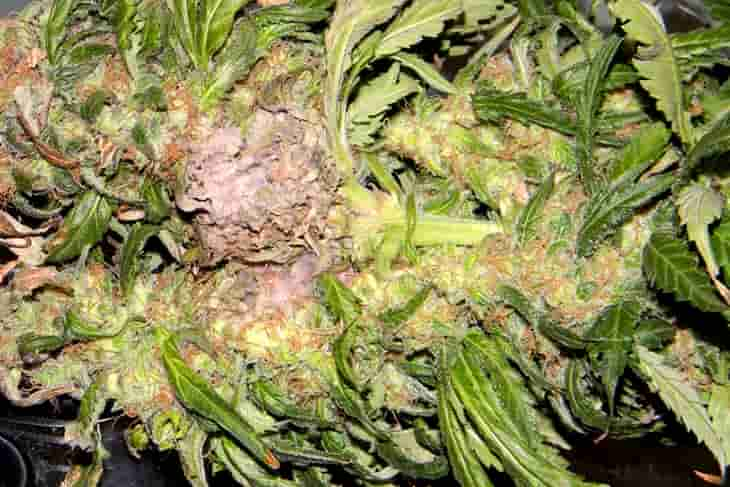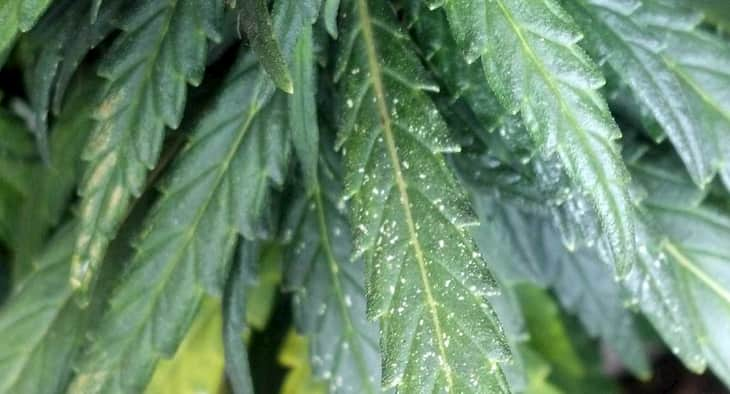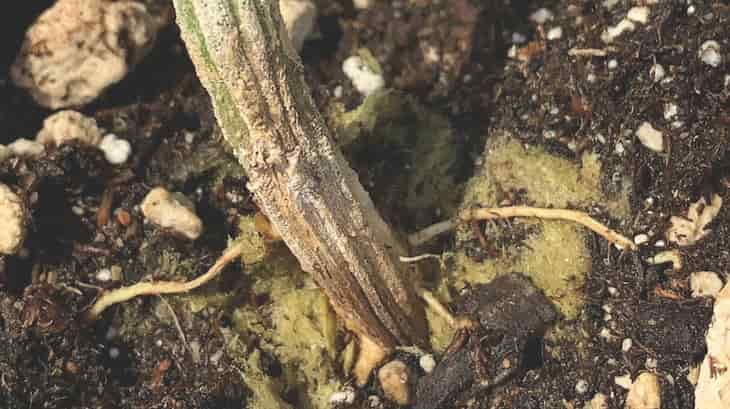
All throughout history, the cannabis Sativa plant has been one of the most resilient ones in existence. So much so that it can extract toxins from the ground and remediate contaminated land. No wonder it’s called “superweed” due to its healing pharmaceutical abilities and various industrial offerings.
However, at the end of the day, it is still a plant, which means it isn’t impervious to disease. We will explore some of the cultivators’ most cannabis common diseases when growing marijuana.
Grey mold (also known as bud rot)

It is scientifically known as Botrytis, a fungus affecting several hundred plant species, including cannabis. It is typically found on plant buds in the late flowering stage.
The presence of any grey mold can destroy your entire crop within days, which is why many cultivators recognize it as their biggest threat.
Prevention and early detection of cannabis disease is an excellent way to go about it – having a sanitary grow space with good airflow and low humidity, and sufficient spacing between plants. Sometimes growers cant deal with increased humidity, which becomes a threat if exceeding 80%. In this case, the best you can do is make excellent airflow and space between colas. Some defoliation might help to increase airflow between plants. If you spot any rotted bud or part of it – get rid of it immediately.
The earliest signs of grey mold can be seen in the colour and texture of your plant. The leaves look dry, the stems soft and brown, and the buds take a cottony-greyish surface. Early bud rot can sometimes take the shape of a powdery white substance, which gradually darkens to a grey, black or purple fuzz over time, eventually turning into a grey-brown slime.
White powdery mildew (PM)

Powdery mildew (Golovinomyces orontii) has a notorious reputation for being a cannabis pathogen, not just because of its damage but because it can be so hard to identify.
If you see a whitish-greyish powdery substance starting to form on your plant’s surface, then you can bet it’s PM. The problem is that it spreads very quickly from the leaves and plant base to the bud and flowers – if you don’t act quickly enough, it can make those lovely buds and flowers completely useless, even if you don’t see any visible signs on them.
Prevention is a good way to tackle this menace – it thrives in cool and humid environments where plants are overcrowded and receive too much water. Again, a sanitary grow space with reasonably good airflow, and clean equipment will improve things, but it may not be enough to prevent the fungi from spreading.
It can spread on cannabis leaves at any growth stage. If you have one, don’t panic and act quickly. There are many sprays you can buy to prevent further spread, also you can search for many natural homemade solutions for it, like soups, etc.
Spider mites

With a scientific name as intimidating as Arachnid Tetranychus urticae, it’s no wonder cultivators have dubbed this as one of the most cringe-worthy cannabis diseases ever. Spider mites tend to give your plants a rather Halloween-like appearance, destroying them very efficiently and being annoyingly hard to get rid of.
If you see any bite marks on the leaves, which look like tiny speckles on the surface, you can bet that an early infestation has taken place. Look even closer, and you may discover the spider mites living on the leaf’s underside. However, they are tiny, and unless you have extra-keen eyesight or magnifying glass on hand, you may not be able to spot them.
Unfortunately, their eggs are equally small, too, so early detection remains very difficult – it isn’t until the damage has been done that you realize spider mites have hit you. Under a typical ‘spider mite’ scenario, you will see the leaves starting to turn yellow, with webs appearing shortly thereafter.
Spider mites work very hard and very fast to destroy your plant, so when it comes to prevention, you need to exercise temperature control and humidity levels so that your grow room isn’t too dry. As with the previous diseases, the opposite applies here, as those tend to survive in humid environments. So, you want to keep a good amount of airflow going and follow sanitation best practices as spider mites and other cannabis fungi/diseases prefer a non-sanitary environment with stagnant air.
To get rid of them – spraying with chemicals is inevitable. There are many of them to buy, just look for those that destroy both: spider mites and their eggs, as you need to kill all.
Fusarium wilt & root rot

In order to destroy illegal crops in Florida, authorities came up with a bioherbicide capable of “finding and eating” cannabis plants completely.
While fusarium has been used as a biocontrol agent to destroy cannabis crops, it is a fungus found naturally in the soil. This causes the leaves to wilt, where you will see dark spots developing on the lower part – they will turn yellow-brown right before wilting. It can still attack cannabis plants at the root and leaf level, blocking essential nutrient delivery and restricting water flow.
Fusarium can also cause root rot, making your plant susceptible to more disease-causing agents.
Is there a way to prevent cannabis diseases early?
There is no 100% protection, but it’s possible to make your plants less vulnerable to most diseases using LED UV light.
The use of LED UV light has been shown to decrease fungal pathogen growth by inhibiting sporulation, so it’s a good investment if you want your plants to remain healthy. A plant that is mildly exposed to LED UV radiation will consistently produce secondary metabolites, which protect it from fungal pathogens and pests. Also, cannabis exposed to UV light in the flowering stage produces more trichomes to protect itself from UV light, so more – THC is expected.
Only top-level brands have LED grow lights with quality UV bars, and because this is a new trend – it’s expensive compared to ordinary LED light fixtures.


